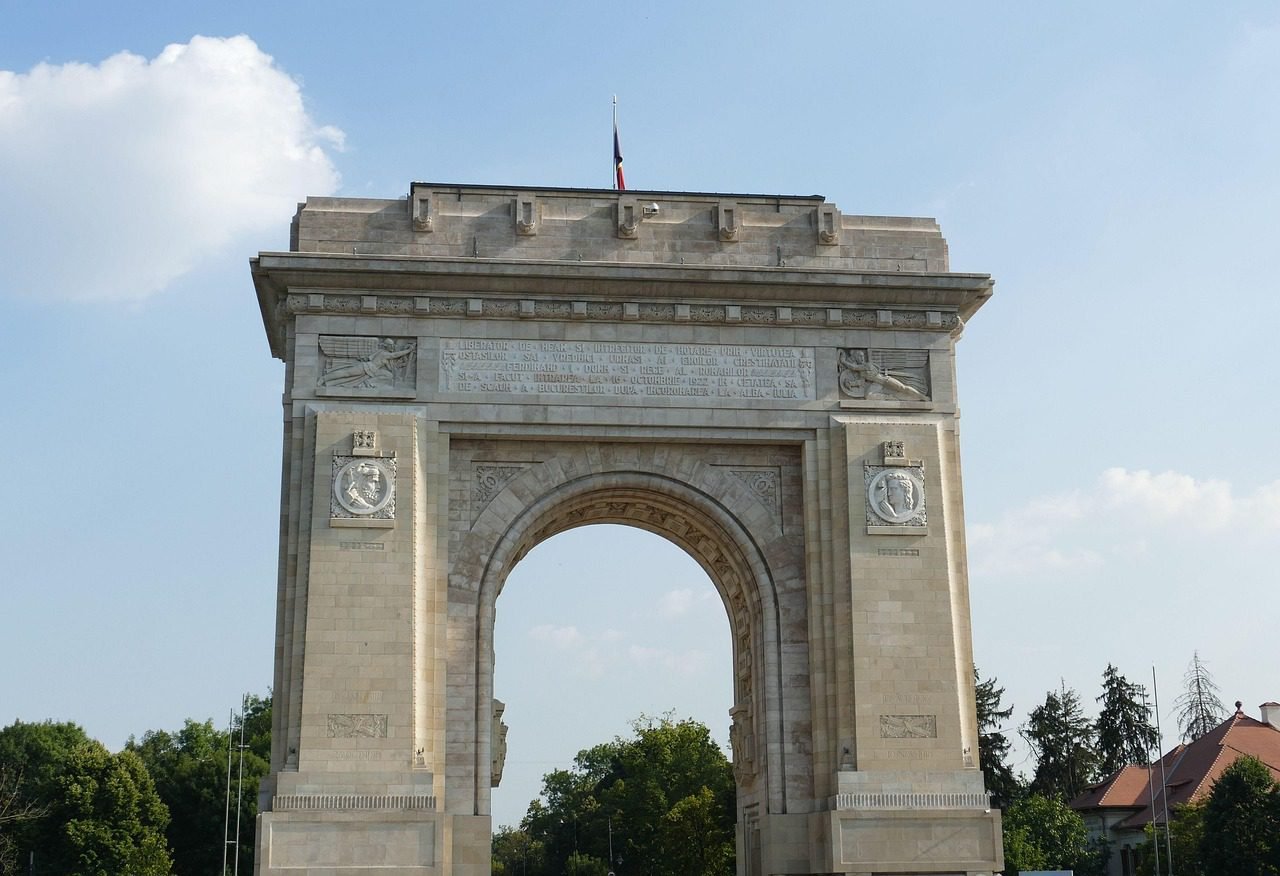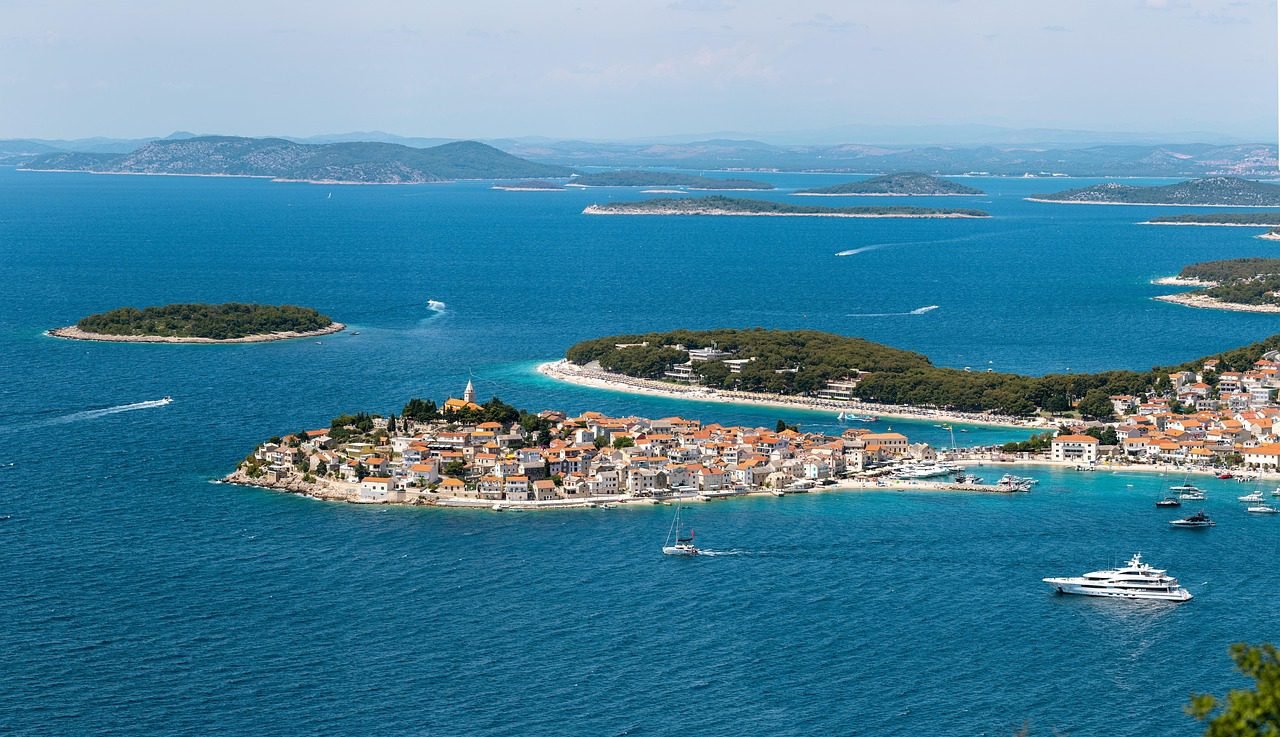Discover the 12 Best Things To Do in Krakow, Poland

With its largest medieval town square in Europe, Kraków is a treasure trove of history and culture. Discovering the 12 best things to do in Krakow begins with strolling through the medieval town square, admiring the Gothic St. Mary’s Basilica, or exploring the Barbican for a glimpse into the past. Dive deeper with a walking tour of the Nazi occupation sites, including Oskar Schindler’s Enamel Factory and the sobering concentration camp on a day trip from Krakow. Unwind at a charming cafe by the Vistula River, or browse market stalls for local crafts. Whether you visit Krakow for its museums or its vibrant atmosphere, this medieval town promises unforgettable experiences.
Key Takeaways:
- Explore the historic Medieval Town Square, one of the largest medieval squares in Europe, filled with vibrant market stalls and a stunning Gothic basilica.
- Visit the Oskar Schindler Enamel Factory, now a museum showcasing Kraków during Nazi occupation and WWII history.
- Take a walking tour through the medieval town to see landmarks like the Barbican and stroll along the scenic Vistula River.
- Discover Wawel Castle and Cathedral, iconic symbols of Kraków, blending Renaissance and Gothic architecture.
- Plan a day trip from Krakow to the nearby concentration camp Auschwitz-Birkenau for a sobering historical experience.
The Allure of Krakow
While Kraków enchants you with its timeless charm, it effortlessly blends history, culture, and modern vibrancy. The 12 best things to do in Krakow include strolling through the largest medieval town square in Europe, sipping coffee in a cozy cafe, or admiring the Gothic spires towering above the Vistula River.
Whether you’re drawn to its medieval town allure or its lively market stalls, this city promises unforgettable experiences at every turn.
The Historical Significance of Krakow
About 700 years of history unfold as you explore Kraków, from its royal roots to the dark shadows of Nazi occupation.

Walk in the footsteps of kings at Wawel Castle or reflect on the harrowing past at Oskar Schindler’s Enamel Factory.
The city’s resilience and heritage make it a living museum, where every corner tells a story.
Architectural Wonders and Cultural Riches
Cultural treasures abound in Kraków, from the awe-inspiring St. Mary’s Basilica to the formidable Barbican.

Join a walking tour to uncover hidden courtyards and grand palaces, or lose yourself in the intricate details of Gothic and Renaissance masterpieces.
The city’s artistic soul thrives in its theaters, galleries, and vibrant street performances.
Hence, your visit wouldn’t be complete without experiencing the 12 best things to do in Krakow, starting with marveling at the medieval town square, where the Cloth Hall stands as a testament to centuries of trade.
The Vistula River adds a scenic backdrop, perfect for a leisurely evening stroll or a day trip from Kraków to nearby Wieliczka Salt Mine.
Krakow’s Status as a UNESCO World Heritage Site
Krakow earned its UNESCO designation in 1978, thanks to its impeccably preserved medieval town core and historic landmarks. From Wawel Hill to the Jewish Quarter, every stone whispers tales of the past, making it a must-visit for history lovers.

With its dangerous yet transformative history—including the nearby concentration camp Auschwitz—Kraków serves as a poignant reminder of humanity’s extremes.
Yet, its positive energy, thriving arts scene, and warm hospitality ensure your journey is as inspiring as it is educational.
Exploring the Enchanting Old Town (Stare Miasto)
One of the 12 best things to do in Krakow is wandering through its medieval town center, Stare Miasto.
Here, you’ll find cobblestone streets, Gothic architecture, and lively market stalls in the largest medieval square in Europe. Don’t miss the THE 15 BEST Things to Do in Krakow (2025) for more inspiration.
Whether you’re admiring the Basilica of St. Mary or sipping coffee in a charming cafe, the Old Town is a must on your visit Krakow itinerary.
Key Landmarks in the Main Square (Rynek Glowny)
Town Hall Tower and the Cloth Hall dominate the medieval town square, offering a glimpse into Kraków’s rich history. You can climb the tower for panoramic views or explore the underground museum beneath the square.
The stunning Basilica of St. Mary, with its iconic twin spires, is another highlight—don’t miss the hourly trumpet call from its tower.
Hidden Gems and Local Favorites
Beside the well-trodden paths, you’ll find secret courtyards, artisan workshops, and cozy cafes tucked away in narrow alleys.

Locals love the lesser-known St. Adalbert’s Church and the charming Kanonicza Street, lined with historic townhouses.
Main attractions like the Oskar Schindler Enamel Factory and the Barbican are worth a detour, but quieter spots like the Planty Park or a stroll along the Vistula River offer peaceful escapes from the crowds.
Best Times to Experience Old Town
Hidden crowds gather in peak summer, so early mornings or late evenings are ideal for a serene walking tour.
Spring and autumn bring milder weather, perfect for exploring without the summer rush.
Local festivals, like the Christmas market or Easter celebrations, transform the market square into a magical scene. However, be aware of pickpockets in busy areas, especially during events.
For a deeper explore history, consider a day trip from Kraków to nearby sites like the concentration camp Auschwitz, a sobering reminder of the Nazi occupation.
Visiting Wawel Royal Castle and Cathedral
After exploring Kraków’s bustling Market Square, head to the iconic Wawel Royal Castle, perched atop Wawel Hill overlooking the Vistula River.
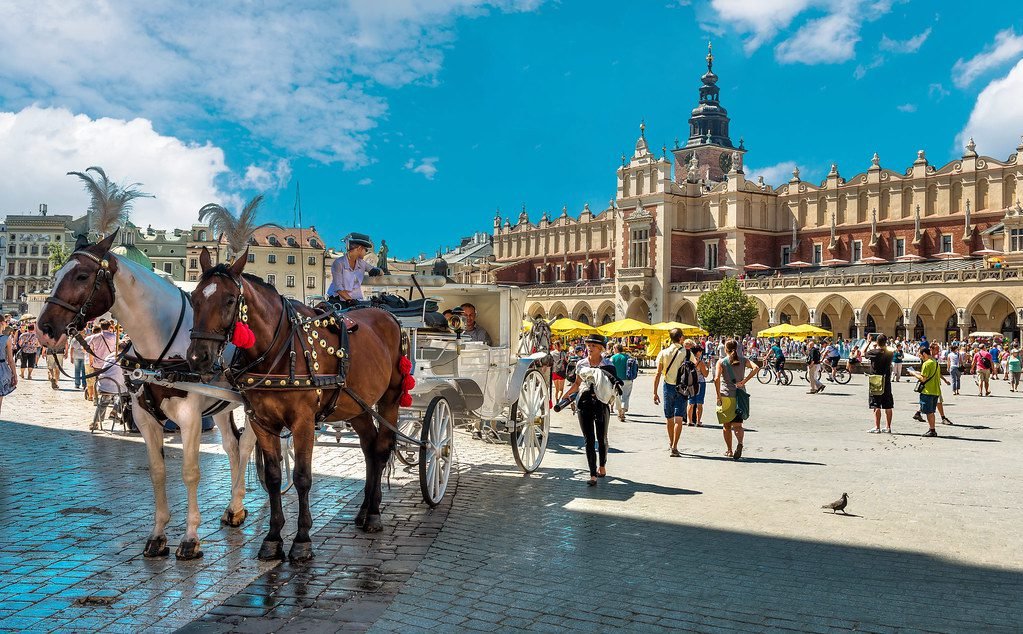
This largest medieval castle in Poland served as the residence of kings and symbolizes the nation’s history. Nearby, the Gothic Wawel Cathedral, a basilica and coronation site, holds royal tombs and stunning chapels.
A walking tour here immerses you in the medieval town’s grandeur, with optional stops at the castle’s museum or a charming cafe.
Highlights of the Castle Complex
Around the castle, you’ll find the opulent State Rooms, the Crown Treasury, and the eerie Dragon’s Den. The courtyard showcases Renaissance architecture, while the panoramic views of the Vistula River and medieval town square are unforgettable.
Don’t miss the Sigismund Bell in the cathedral tower—its chime echoes across Kraków.
The Royal Cathedral’s Importance and Features
The Wawel Cathedral is Poland’s spiritual heart, housing the tombs of saints and monarchs. Its Gothic design, ornate chapels, and the Sigismund Chapel’s golden dome are must-see features.
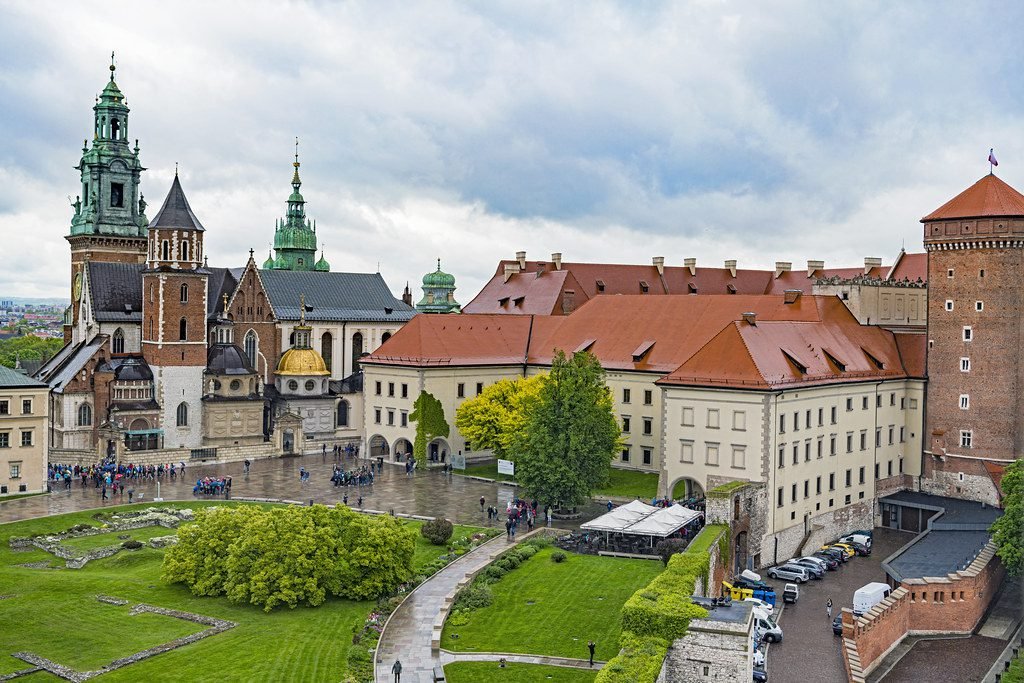
The cathedral also played a role during the Nazi occupation, adding layers to its historical significance.
Visiting the cathedral, you’ll step into a sacred space where Polish history unfolds. Climb the tower for breathtaking views, or admire the intricate altarpieces.
Nearby, the Oskar Schindler enamel factory offers a sobering contrast to this spiritual landmark.
Myths and Legends of Wawel Hill
Legends swirl around Wawel Hill, from the fiery dragon slain by King Krak to the cursed treasures hidden beneath. The dragon’s den, marked by a metal sculpture, is a favorite spot for photos.
These tales add magic to your visit Krakow experience.
With its mix of history and folklore, Wawel Hill captivates every visitor. Nearby, the Barbican and Market stalls offer a glimpse into Kraków’s past, while a day trip from Kraków to Auschwitz concentration camp provides a stark reminder of darker times.
Consider reading our article: Top Eastern Europe Destinations: Uncover the Continent’s Best-Kept Secrets
The Jewish Quarter of Kazimierz: A Journey Through History
Not just a district but a living testament to Kraków’s rich Jewish heritage, Kazimierz invites you to step into a world where history echoes through its cobbled streets.
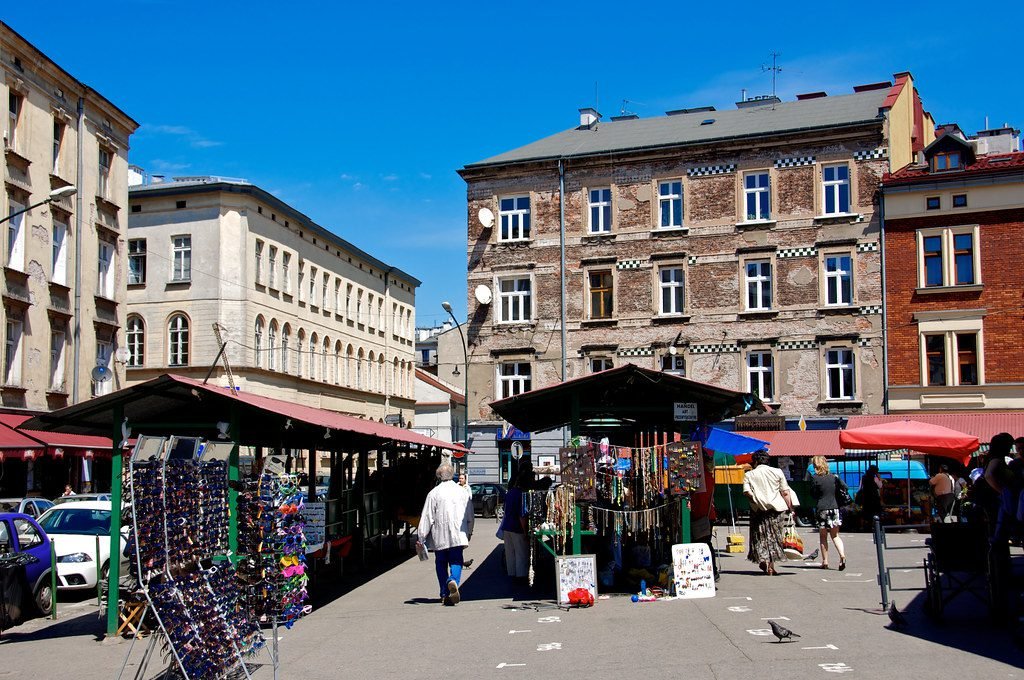
Once a thriving center of Jewish life before the Nazi occupation, this neighborhood now blends poignant memorials with vibrant culture.
From its synagogues to the haunting remnants of the past, Kazimierz offers a walking tour through time, revealing stories of resilience and revival.
Don’t miss the chance to explore this UNESCO-listed area, where every corner holds a piece of Kraków’s soul.
Evolution of Kazimierz from Past to Present
Evolution transformed Kazimierz from a medieval town into a cultural hub, surviving wars and upheavals. Once a separate city, it merged with Kraków in the 19th century, becoming the heart of Jewish life until WWII.

Today, it’s a dynamic mix of history and modernity, where market stalls sit beside trendy cafes, and old synagogues host lively festivals.
The district’s revival, fueled by art and tourism, makes it a must-see on your visit Krakow itinerary.
Culinary Delights: Where to Eat in Kazimierz
Delights await in Kazimierz, where traditional Jewish and Polish flavors meet contemporary cuisine. From hearty pierogi at rustic eateries to innovative dishes at hip bistros, the district caters to every palate.

Savor a meal at a cafe overlooking the Vistula River, or try zapiekanka, a local street food staple, at Plac Nowy.
The culinary scene here is as diverse as its history, offering a feast for your senses.
Understanding the food culture in Kazimierz means venturing into its multicultural roots. Many restaurants serve dishes inspired by pre-war Jewish traditions, while others embrace modern twists.
Don’t miss a stop at one of the district’s iconic bakeries or a drink at a rooftop bar with views of the Gothic skyline. Whether you crave nostalgia or innovation, Kazimierz delivers.
Must-Visit Synagogues and Cultural Sites
After exploring Kazimierz’s streets, immerse yourself in its spiritual and cultural landmarks.
The Old Synagogue, now a museum, showcases Jewish history, while the Remuh Synagogue remains an active place of worship. Nearby, the Galicia Jewish Memorial honors Holocaust victims.
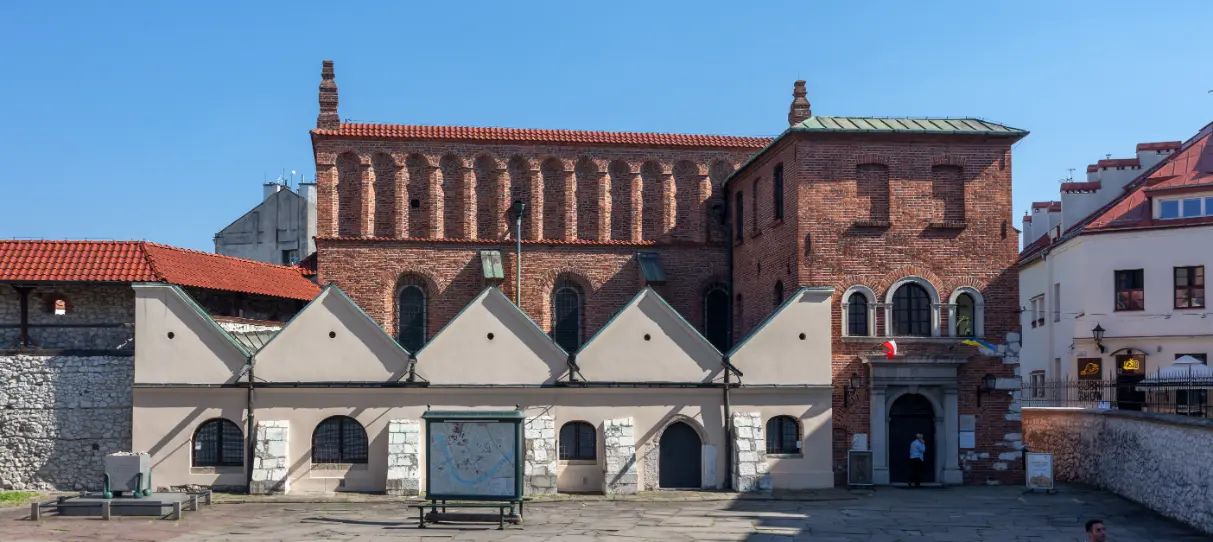
These sites, along with the Oskar Schindler enamel factory, paint a vivid picture of the district’s legacy.
Kazimierz is home to some of the 12 best things to do in Krakow, including the Tempel Synagogue and the Ethnographic Museum.
A day trip from Krakow isn’t complete without visiting these landmarks, which reveal the neighborhood’s resilience.
Be mindful of the dangerous chapters of history they represent, but also celebrate the positive revival of Jewish culture here today.
Auschwitz-Birkenau Memorial: A Somber Reflection
Now, a day trip from Kraków takes you to the Auschwitz-Birkenau Memorial, a haunting reminder of the Nazi occupation and the atrocities of World War II.
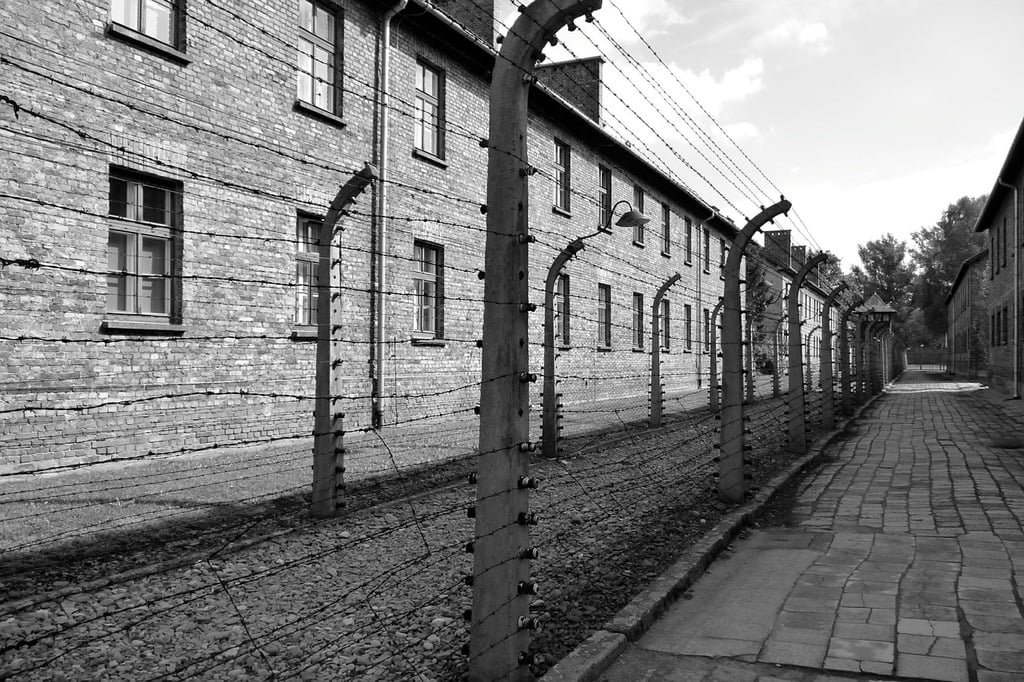
This former concentration camp stands as a powerful museum, urging reflection on humanity’s darkest hours.
While in Kraków, balance your itinerary with lighter experiences, like exploring the largest medieval market square or a walking tour of the Gothic basilica.
Preparing for an Impactive Visit
At the Auschwitz-Birkenau Memorial, prepare for an emotionally heavy experience. Wear comfortable shoes, as you’ll walk extensively on uneven terrain. Bring water, but avoid large bags—security is strict.
Silence and respect are expected, as this site honors over a million victims. Consider visiting a cafe or the Vistula River afterward to process your emotions.
Guided Tours vs. Independent Exploration
Exploration here can be done solo or with a guide. A guided tour provides in-depth historical context, while independent visits allow personal reflection at your own pace. Choose based on your preference for structure or solitude.
Preparing for either option, book tickets in advance—the site limits daily entries. Guides often share survivor stories, adding depth, but solo visits let you linger at exhibits like the enamel factory tied to Oskar Schindler.
The Historical Context and Legacy of Auschwitz
Visit with awareness of its role in the Holocaust. The camp’s preserved barracks, gas chambers, and personal artifacts reveal the horrific scale of genocide. Its legacy serves as a warning against hatred and intolerance.
Due to its profound significance, approach the memorial with reverence. Nearby, the Barbican and medieval town square in Kraków offer a contrast—reminders of resilience and cultural richness beyond the darkness.
The Incredible Wieliczka Salt Mine
Many visitors to Kraków include a day trip from Krakow to the Wieliczka Salt Mine, a mesmerizing underground world just 15 km from the city.
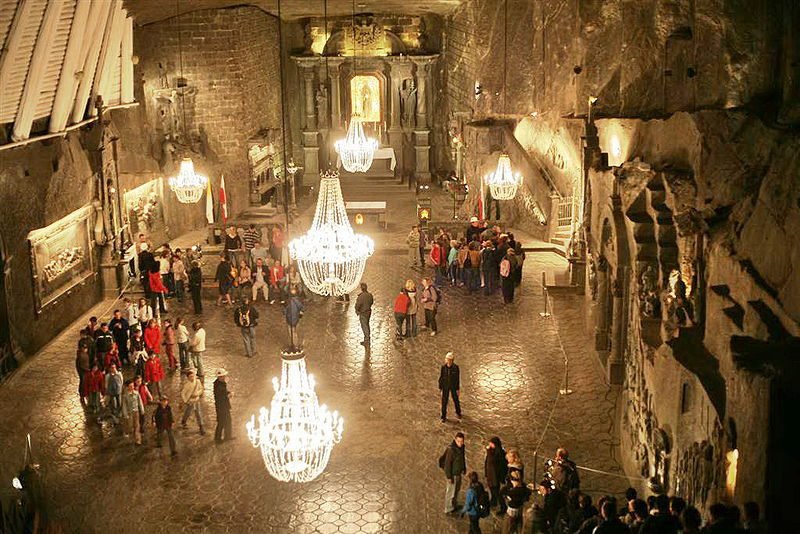
This UNESCO-listed attraction features stunning chambers, intricate salt sculptures, and even an underground lake.
Whether you’re on a guided walking tour or exploring independently, the mine’s historical and artistic wonders will leave you in awe.
Don’t miss the chance to descend 135 meters below ground and witness one of the 12 best things to do in Krakow.
UNESCO Status and Historical Background
The Wieliczka Salt Mine earned its UNESCO designation in 1978, recognizing its cultural and historical significance. Operating since the 13th century, it played a vital role in Poland’s economy during the medieval town era.
You’ll learn about its evolution from a working mine to a museum, preserving centuries of craftsmanship. The mine also served as a shelter during Nazi occupation, adding another layer to its rich past.
Must-See Chambers and Sculptures
Between the mine’s labyrinthine tunnels, you’ll find breathtaking spaces like the Chapel of St. Kinga, carved entirely from salt. Marvel at chandeliers, altars, and statues—all crafted by miners over centuries.

The underground lake in the Erazm Barącz Chamber adds a magical touch, reflecting the mine’s surreal beauty.
At the heart of the mine, the Wieliczka experience includes interactive exhibits and stories of miners’ lives.
You’ll see how salt was extracted and even encounter a replica of Da Vinci’s The Last Supper, painstakingly carved into salt walls.
Depth and Length of Tours Available
Chambers stretch across nine levels, reaching depths of 327 meters, though most tours cover just the first three. Standard tours last about 2-3 hours, covering 3.5 km of passages.
For adventurers, the “Miners’ Route” offers hands-on activities, but be prepared for tight spaces and steep stairs.
Salt mining conditions were dangerous, and you’ll hear tales of the challenges faced by workers.
Today, the mine is safe for visitors, with well-lit paths and expert guides ensuring a smooth experience. Wear comfortable shoes—you’ll be walking a lot!
Krakow’s Lively Nightlife Scene
For an unforgettable evening, Kraków offers a vibrant nightlife scene that caters to every taste. From chic cocktail bars to underground clubs, the city buzzes with energy after dark.
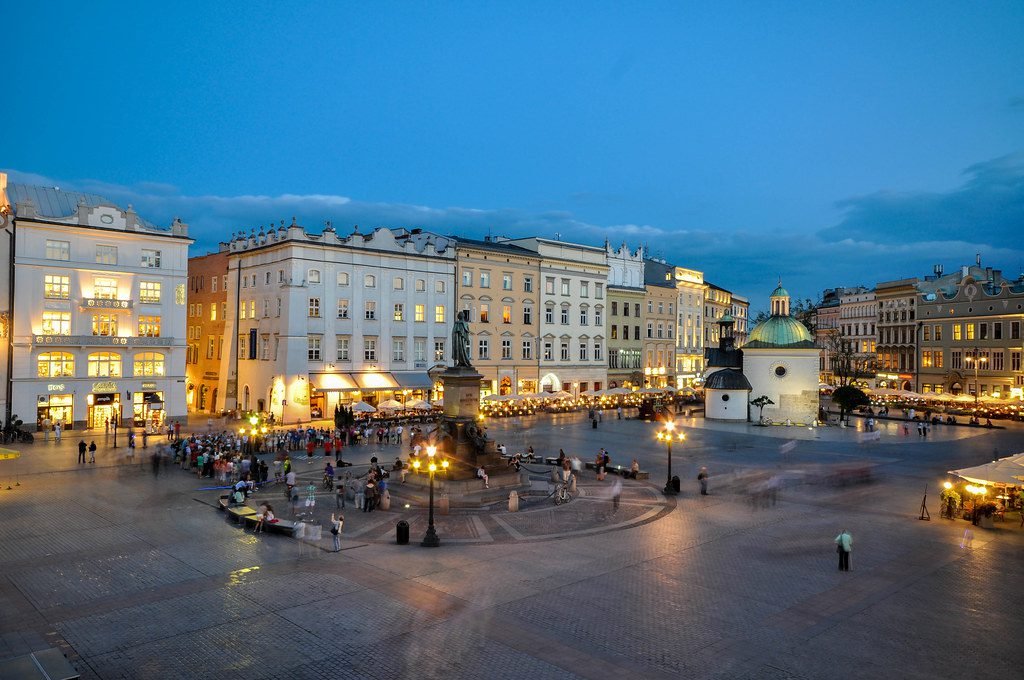
Whether you prefer dancing until dawn or sipping craft beers in a cozy cafe, the medieval town transforms into a playground for night owls.
The Market Square and nearby Kazimierz district are hotspots, blending history with modern revelry. Don’t miss the chance to mingle with locals and travelers alike—this is definitely one of the 12 best things to do in Krakow.
Top Bars and Pubs to Experience
By exploring Kraków, you’ll find iconic spots like Alchemia in Kazimierz, known for its bohemian vibe, or Wódka Bar, offering over 100 vodka flavors.

For craft beer lovers, Omerta or House of Beer serve local brews in lively settings.
Many bars are nestled in historic cellars, adding a medieval charm to your night out. Pair your drinks with pierogi or zapiekanka from market stalls—perfect for fueling your adventures.
Unique Drinking Establishments and Traditions
About diving deeper, Kraków boasts quirky spots like Pijalnia Wódki i Piwa, where cheap shots and retro decor reign.
Try a walking tour of Kazimierz’s Jewish quarter, ending with a tipple at a hidden speakeasy.
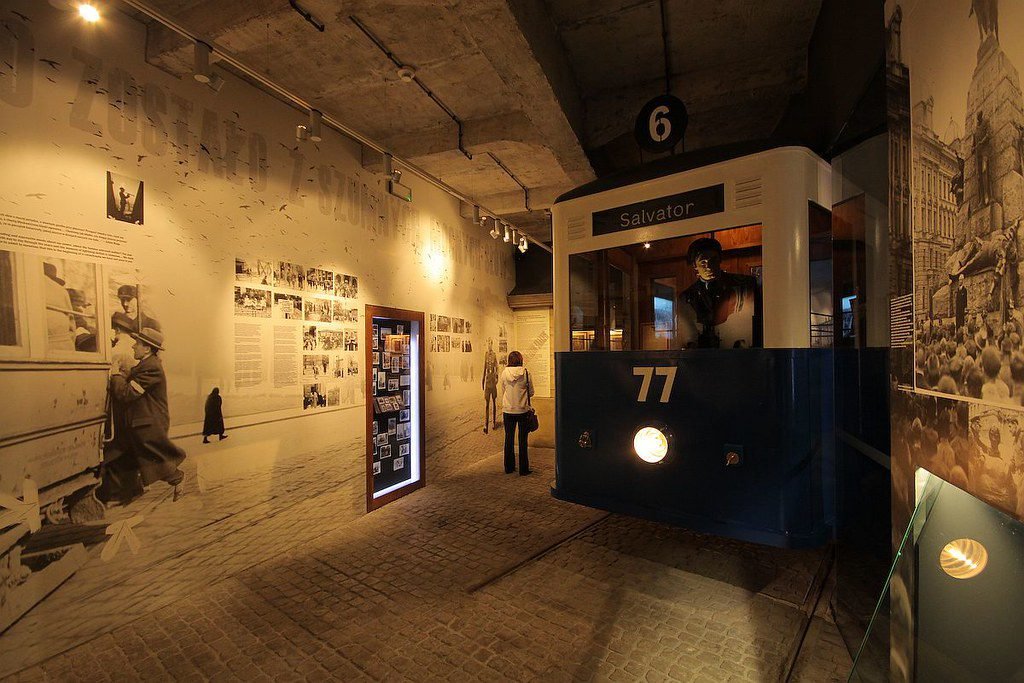
Don’t miss the tradition of “zakąski”—small bites paired with vodka—or sampling mead, Poland’s ancient honey wine. These experiences connect you to the city’s cultural roots while keeping the night lively.
In fact, some bars are housed in former enamel factory buildings or Gothic cellars, blending history with hedonism. The Vistula River banks also host summer pop-up bars, where you can sip cocktails with stunning views.
Whether you’re toasting at a medieval town square or a communist-era dive, Kraków ensures your night is anything but ordinary.
Safety Considerations for Nightlife
The key to enjoying Kraków after dark is staying aware. Stick to well-lit areas like the Market Square or main streets, and avoid overly aggressive street vendors.
Pickpocketing can occur in crowded clubs, so keep your belongings secure. Taxis should be booked via apps like Bolt to avoid scams.

While the city is generally safe, excessive drinking can make you a target—pace yourself and stay with friends.
With its lively atmosphere, Kraków is mostly safe, but incidents like overcharging at tourist-heavy bars or fake taxis do happen. Always check prices before ordering, and avoid unlicensed cabs.
If you’re staying out late, consider accommodations near the Barbican or Vistula for easy access. By staying alert, you’ll enjoy the city’s nightlife without hiccups.
Scenic Strolls Through Planty Park
Despite being a bustling medieval town, Kraków offers serene escapes like Planty Park, a lush green belt encircling the Old Town.

Walking along its shaded paths, you’ll pass charming cafes, historic fountains, and vibrant flower beds—perfect for a leisurely break between sightseeing. This 4-kilometer loop is ideal for a walking tour, letting you admire the city’s Gothic architecture while enjoying fresh air.
Don’t miss the views of landmarks like the Barbican and Florian’s Gate, which blend seamlessly into the park’s tranquil setting.
The Historical Significance of Planty Park
Behind the beauty of Planty Park lies a rich past. Created in the 19th century after the city walls were demolished, it symbolizes Kraków’s transformation from a medieval fortress to a modern hub.

During the Nazi occupation, it served as a rare green refuge for locals. Today, its pathways trace the original moat, offering a tangible link to the city’s defensive history.
As you explore, you’ll sense how this park has witnessed centuries of change, from royal processions to wartime resilience.
Seasonal Activities and Events
With every season, Planty Park transforms. Spring brings blooming magnolias, summer hosts open-air concerts, and autumn paints the trees in fiery hues.
Winter turns the park into a magical scene, with snow-dusted benches and festive lights near the Market Square. Whether you’re visiting for a quiet stroll or lively events, there’s always something to enjoy.
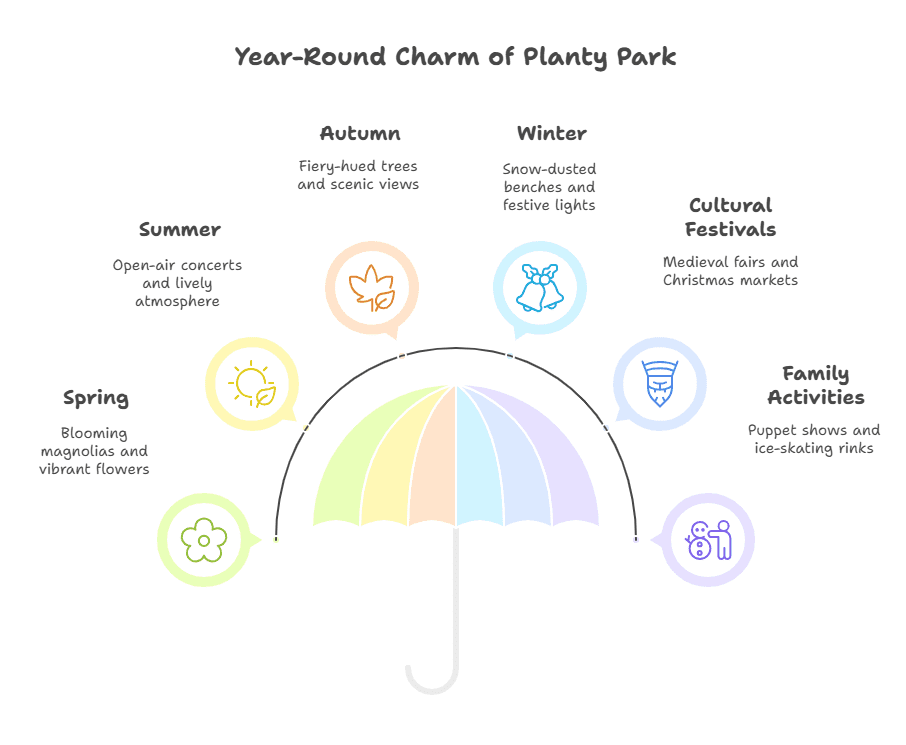
The park also hosts cultural festivals, like Kraków’s largest medieval fairs and Christmas markets. You can browse market stalls selling handmade crafts or warm up with mulled wine.
For families, puppet shows and ice-skating rinks add to the charm, making it a year-round highlight of the 12 best things to do in Krakow.
Notable Monuments and Points of Interest
Significance defines Planty Park’s landmarks, from the Basilica of St. Francis to the poignant Jan Matejko statue. The park’s layout guides you past remnants of the old city walls, including the Barbican, a medieval defensive tower.
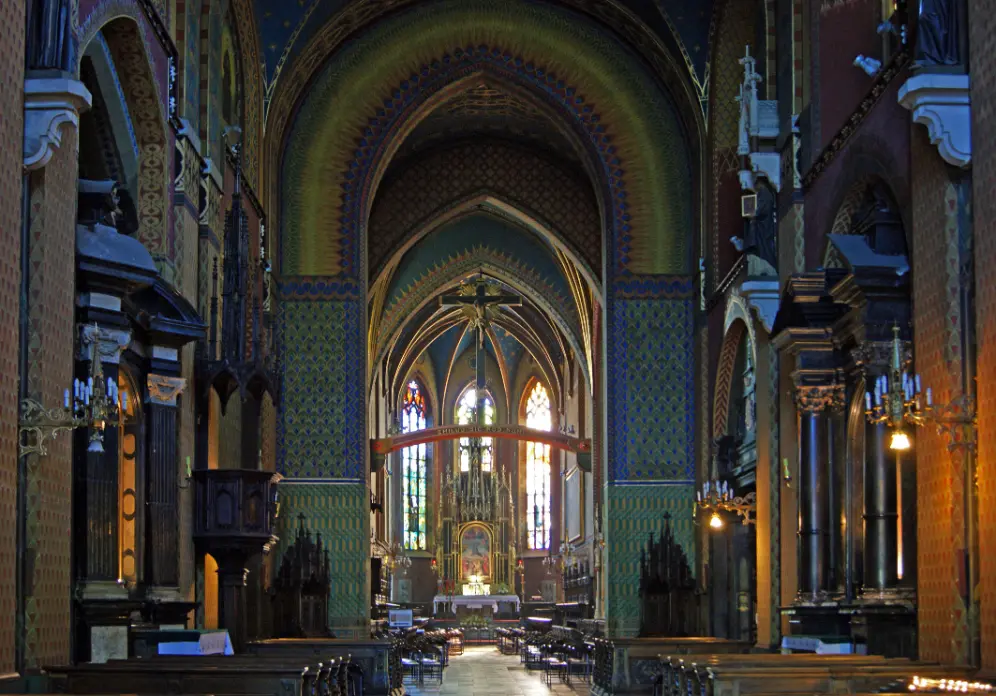
Near the Vistula River, you’ll find the elegant Grunwald Monument, commemorating a historic battle. Each site tells a story, enriching your walk with layers of history.
Another standout is the Oskar Schindler Enamel Factory, just a short walk from the park. This museum probes into the city’s wartime struggles, offering a sobering contrast to the park’s peace.
For a deeper dive, pair your stroll with a day trip from Kraków to the nearby concentration camp memorials, reflecting on the city’s resilience.
Shopping at Sukiennice (Cloth Hall)
Unlike modern malls, the Sukiennice (Cloth Hall) in Kraków offers a historic shopping experience right in the medieval town square.

This largest medieval trading hub, now a UNESCO-listed gem, brims with market stalls selling everything from amber jewelry to handcrafted souvenirs.
While browsing, admire its Gothic arcades and Renaissance-era upper floor, which houses a museum showcasing Polish art.
A visit here pairs perfectly with a walking tour of the Market Square, just steps from landmarks like the Basilica and Barbican.
Local Crafts and Souvenirs to Buy
The Sukiennice is a treasure trove of authentic Polish keepsakes. Look for intricately carved wooden boxes, amber jewelry, and traditional folk art like painted ceramics or lace.

Handwoven textiles and szopki (Kraków’s iconic nativity scenes) make unforgettable gifts. For edible souvenirs, try oscypek (smoked cheese) or pierniki (spiced gingerbread).
Bargaining isn’t common, but prices are fair—support local artisans while taking home a piece of Kraków’strong>’s heritage.
Historical Evolution of the Cloth Hall
Around the 13th century, the Sukiennice began as a row of stone stalls, evolving into a Gothic trading hall by the 1300s. After a fire in 1555, it was rebuilt in Renaissance style, gaining its iconic arched colonnades.

The 19th-century renovation added the upper floor and ornate decorations, cementing its role as Kraków’s commercial heart.
Today, it stands as a symbol of the city’s resilience through medieval prosperity, Nazi occupation, and communist rule.
In addition, the Cloth Hall’s upper level houses the Sukiennice Museum, part of the National Museum of Kraków.
Here, you’ll find 19th-century Polish paintings and exhibits detailing the building’s historical significance. Its central location made it a hub for traders from across Europe, linking Kraków to the Hanseatic League.
Don’t miss the underground museum beneath the square, revealing excavated medieval market remnants.
Trading Hours and Visitor Tips
At the Sukiennice, most stalls open daily from 10 AM to 6 PM, with shorter hours on Sundays. For fewer crowds, arrive early or visit weekdays.
Cash is widely accepted, but card payments are common. Keep an eye on your belongings in busy hours. Nearby, recharge at a cafe overlooking the Vistula River.
After shopping, explore the Oskar Schindler’s Enamel Factory or take a day trip from Kraków to the concentration camp memorials.
Historical context enriches your visit: the Cloth Hall survived wars and political shifts, emerging as a must-see landmark. Key tips:
- Combine your visit with a walking tour of the Old Town.
- Avoid peak lunch hours (12–2 PM) for a relaxed experience.
- Check for seasonal events, like Christmas markets.
After exploring, stroll to the Vistula boulevards for sunset views.
A Day Trip to Ojców National Park
Keep your Kraków adventure going with a scenic day trip from Kraków to Ojców National Park, just 30 minutes away.
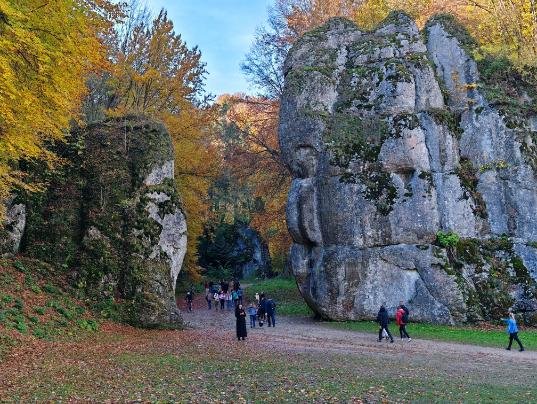
This natural wonder is Poland’s smallest national park but packs stunning limestone cliffs, deep valleys, and lush forests. Whether you’re escaping the bustle of Market Square or seeking fresh air after exploring the Gothic charm of the city, Ojców offers a perfect retreat.
Don’t miss the iconic Hercules’ Club rock formation or the charming Pieskowa Skała Castle, blending nature and history seamlessly.
Natural Wonders and Landscapes
Along your journey, you’ll encounter dramatic rock formations, like the towering Maczuga Herkulesa, and serene valleys carved by the Prądnik River. The park’s diverse ecosystems host rare plants and wildlife, making it a paradise for nature lovers.
The Dark Cave, one of Poland’s few accessible caves, adds a touch of mystery. For the best views, head to the Kraków Gate, a natural limestone arch offering panoramic vistas of the park’s stunning landscapes.
Hiking Trails and Outdoor Activities
To explore Ojców’s beauty, lace up your boots for its well-marked hiking trails, ranging from easy strolls to challenging climbs.

The Eagle’s Path trail leads you past key landmarks, while the Prądnik Valley route is perfect for a leisurely walk.
Cyclists and rock climbers will also find plenty of opportunities to test their skills.
It’s worth noting that some trails can be steep or slippery, especially after rain, so wear sturdy shoes. Pack water and snacks, as facilities are limited.
The park’s tranquil atmosphere makes it ideal for picnics or photography, so bring your camera to capture the breathtaking scenery.
Historical and Cultural Attractions in Ojców
Historical gems like the 14th-century Ojców Castle ruins and the Renaissance-style Pieskowa Skała Castle add depth to your visit. The latter houses a museum showcasing Polish art and history, offering a cultural break from hiking.
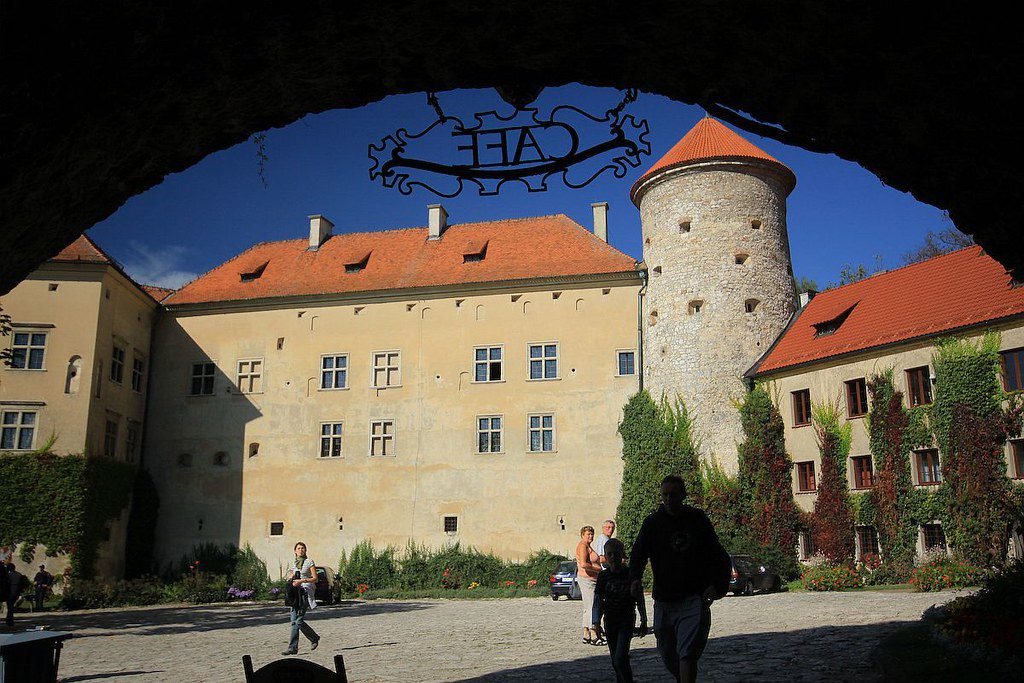
Nearby, the Chapel on the Water, a unique wooden church built over a stream, reflects the region’s spiritual heritage.
Also, don’t overlook the local legends tied to these sites, like the tale of King Łokietek hiding in Ojców Cave during wartime.
These stories, combined with the park’s rich history from the medieval era to Nazi occupation, make it more than just a natural escape—it’s a journey through time.
Exploring History at the Oskar Schindler Factory
To step into the Oskar Schindler Factory is to immerse yourself in Kraków’s harrowing past during the Nazi occupation.

This museum, housed in the former enamel factory, tells the story of Schindler’s efforts to save Jewish workers, blending personal narratives with wartime history.
Located in the medieval town of Podgórze, it’s a must-visit when you visit Krakow, offering a profound look at resilience amid tragedy.
The Significance of the Schindler Factory
With its role in World War II, the Oskar Schindler Factory stands as a symbol of hope and defiance. Schindler’s list saved over 1,000 lives, and the museum preserves this legacy through powerful exhibits.

Situated near the Vistula River, it’s a stark reminder of Kraków’s wartime struggles, making it a key stop on any walking tour of the city’s history.
Overview of the Museum Exhibits
Schindler’s Factory Museum takes you through Kraków’s transformation under Nazi rule, with interactive displays and authentic artifacts.
You’ll walk through recreated streets, witness personal testimonies, and explore the factory floor where Schindler’s workers labored.
The exhibits are thought-provoking, blending multimedia with historical depth.
Considering the museum’s layout, you’ll move chronologically from pre-war Kraków to the post-war aftermath.
Highlights include Schindler’s office and a wall of survivors’ names. The experience is emotionally intense, so take your time to absorb the stories.
Visitor Experience and Price Information
An visit here is highly recommended, but be prepared for crowds—book tickets online to skip the queue.
The museum is wheelchair-accessible, and audio guides enhance your understanding. Afterward, unwind at a nearby cafe to reflect on the experience.
Price for admission is affordable, with discounts for students and seniors. Free entry is offered on select days, but these times are extremely busy.
Plan ahead to avoid long waits, especially if combining it with a day trip from Kraków to nearby sites like the concentration camp in Auschwitz.
Cultural Events and Festivals in Kraków
Keep your visit to Kraków vibrant by exploring its rich cultural scene. From open-air concerts in the Medieval Town Square to avant-garde theater performances, the city pulses with creativity.
Don’t miss the Jewish Culture Festival, one of Europe’s most significant events celebrating Jewish heritage, or summer jazz nights along the Vistula River.
Whether you’re admiring Gothic architecture or sipping coffee in a historic cafe, Kraków’s events add depth to your experience.
Annual Festivals Celebrating Local Heritage
Against the backdrop of Kraków’s largest medieval market square, festivals like Lajkonik and Wianki bring folklore to life. These events honor traditions with parades, flower wreaths floating on the Vistula, and lively market stalls.
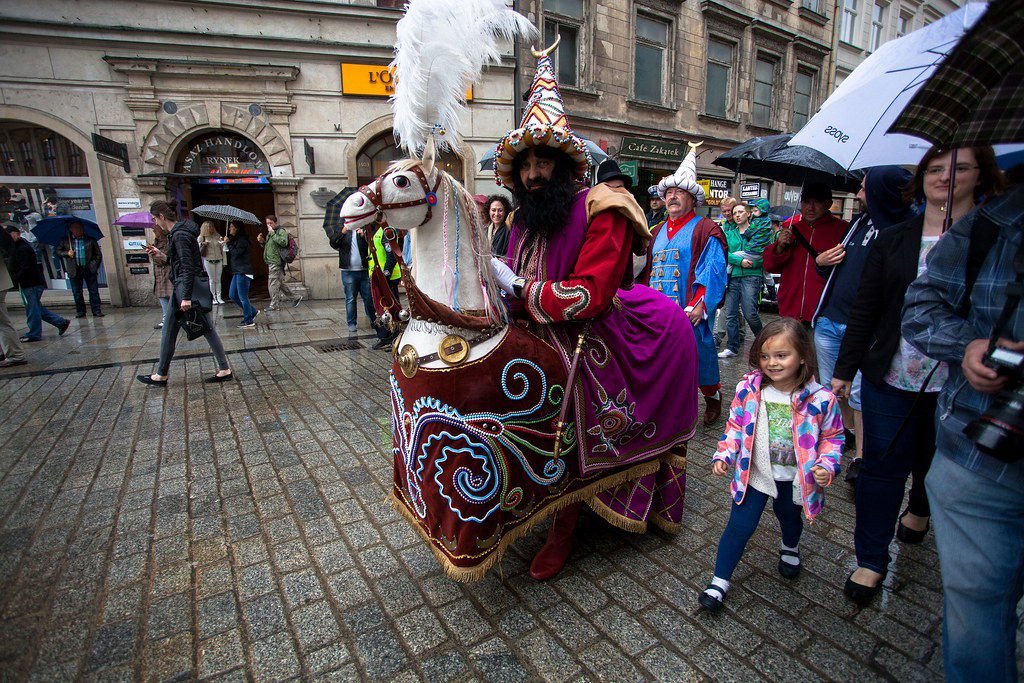
The Kraków Nativity Scene Contest, held near the Barbican, showcases intricate craftsmanship, while the Pierogi Festival lets you savor Poland’s iconic dumplings. Each festival offers a glimpse into the city’s soul.
Recommended Cultural Experiences
Beside the Basilica and Oskar Schindler’s Enamel Factory, dive deeper with a walking tour of Kazimierz, the historic Jewish quarter.
Visit the Museum of Contemporary Art or catch a classical concert in a Gothic church.
For a poignant journey, take a day trip from Kraków to the concentration camp at Auschwitz. These experiences blend history, art, and emotion, leaving a lasting impression.

Festivals like Kraków Film Festival and Sacrum Profanum highlight the city’s modern cultural edge.
Explore underground clubs or attend a Nazi occupation-themed exhibit at the Historical Museum. Whether you’re drawn to solemn reflection or lively celebration, Kraków delivers.
How to Participate in Local Events
Heritage events in Kraków are often free or low-cost, but some require tickets. Check tourism boards or local cafe bulletin boards for schedules. Join a walking tour to uncover hidden gems, or rent a bike to explore festivals along the Vistula River.
Book early for major events like the Jewish Culture Festival, as they draw crowds.
Celebrating with locals means embracing spontaneity—stumble upon a medieval reenactment near the Market Square or chat with artisans at market stalls. Respectful participation is key, especially at solemn sites like Auschwitz.
Whether you’re clinking glasses at a cafe or admiring the Barbican, immerse yourself fully.
Practical Tips for Traveling in Kraków
All visitors to Kraków should keep a few practical tips in mind for a smooth trip.
- Carry cash for smaller shops and market stalls.
- Wear comfortable shoes for exploring the medieval town on foot.
- Book tickets in advance for popular sites like Oskar Schindler’s Enamel Factory or Wawel Castle.
Knowing these basics will help you make the most of your time in this historic city.
Getting Around: Public Transport and Walking
One of the easiest ways to explore Kraków is by walking—its compact medieval town square and landmarks like the Barbican are best seen on foot. For longer distances, use trams or buses, which are affordable and efficient.
A 24-hour ticket is ideal if you plan multiple stops. The Vistula River paths also offer scenic routes for strolls or bike rides.
Language and Communication Tips
Across Kraków, you’ll find many locals speak English, especially in tourist areas.

- Learn basic Polish phrases like “Dziękuję” (thank you) for a warmer reception.
- Menus and signs in cafés or museums often have English translations.
Assume that a little effort goes a long way in making connections.
In addition, Polish pronunciation can be tricky, but don’t let that stop you.
- Use a translation app for complex conversations.
- Younger Poles are more likely to speak English fluently.
Assume that smiling and patience will bridge any language gaps.
Currency and Costs for Tourists
Currency in Poland is the złoty (PLN), and Kraków is relatively affordable compared to Western Europe.

Expect lower prices in local cafés and market stalls, while attractions like the Wieliczka Salt Mine or Auschwitz-Birkenau (a sobering day trip from Kraków) have fixed entry fees. Credit cards are widely accepted, but smaller vendors may prefer cash.
Tips for managing costs: avoid exchanging money at airports (rates are poor), and use ATMs instead. Street performers and unofficial guides in the Market Square may overcharge—stick to licensed services.
For dining, milk bars offer budget-friendly Polish meals. Public transport is cheap, but watch for pickpockets in crowded areas.
Summing up
To wrap up, your visit to the 12 best things to do in Krakow offers a rich blend of history, culture, and charm.
Explore the largest medieval town square in Europe, admire the Gothic St. Mary’s Basilica, or stroll along the Vistula River.
Dive into the past at Oskar Schindler’s Enamel Factory or take a sobering day trip from Krakow to a nearby concentration camp.
Wander through the Barbican, browse market stalls, or join a walking tour to uncover the city’s medieval town roots and Nazi occupation legacy.
Don’t miss a cozy café break—Kraków’s vibrant energy ensures an unforgettable experience.
FAQ
What are the top historical attractions to visit in Kraków?
Kraków is rich in history, with must-see sites like the Wawel Royal Castle, the Gothic St. Mary’s Basilica, and the medieval Main Market Square—one of the largest medieval town squares in Europe. Don’t miss the Barbican, a well-preserved fortress gate, or Oskar Schindler’s Enamel Factory, which highlights Nazi occupation history.
Are there any notable museums in Kraków?
Yes! The city offers fascinating museums such as the Oskar Schindler’s Enamel Factory, which researchs into WWII history, and the Rynek Underground Museum beneath the Main Market Square, showcasing medieval Kraków. The Wawel Cathedral and the Czartoryski Museum, home to Da Vinci’s “Lady with an Ermine,” are also worth visiting.
What are the best outdoor activities in Kraków?
A walking tour through the medieval town is a great way to explore. Stroll along the Vistula River, relax in Planty Park, or visit the lively market stalls in the Main Market Square. For a scenic escape, take a day trip from Kraków to the nearby Tatra Mountains or Wieliczka Salt Mine.
Where can I experience Kraków’s café culture?
Kraków has a vibrant café scene, especially in the Old Town and Kazimierz district. Enjoy coffee in charming spots like Café Camelot or Café Młynek, which offer a mix of historic ambiance and modern flavors. Many cafés are near the Main Market Square, making them perfect for a break during sightseeing.
What is a meaningful day trip from Kraków?
A visit to Auschwitz-Birkenau, a former Nazi concentration camp, provides a sobering but important historical perspective. Alternatively, explore the Wieliczka Salt Mine or the picturesque Ojców National Park. Both are easily accessible and offer unique experiences beyond the city.


